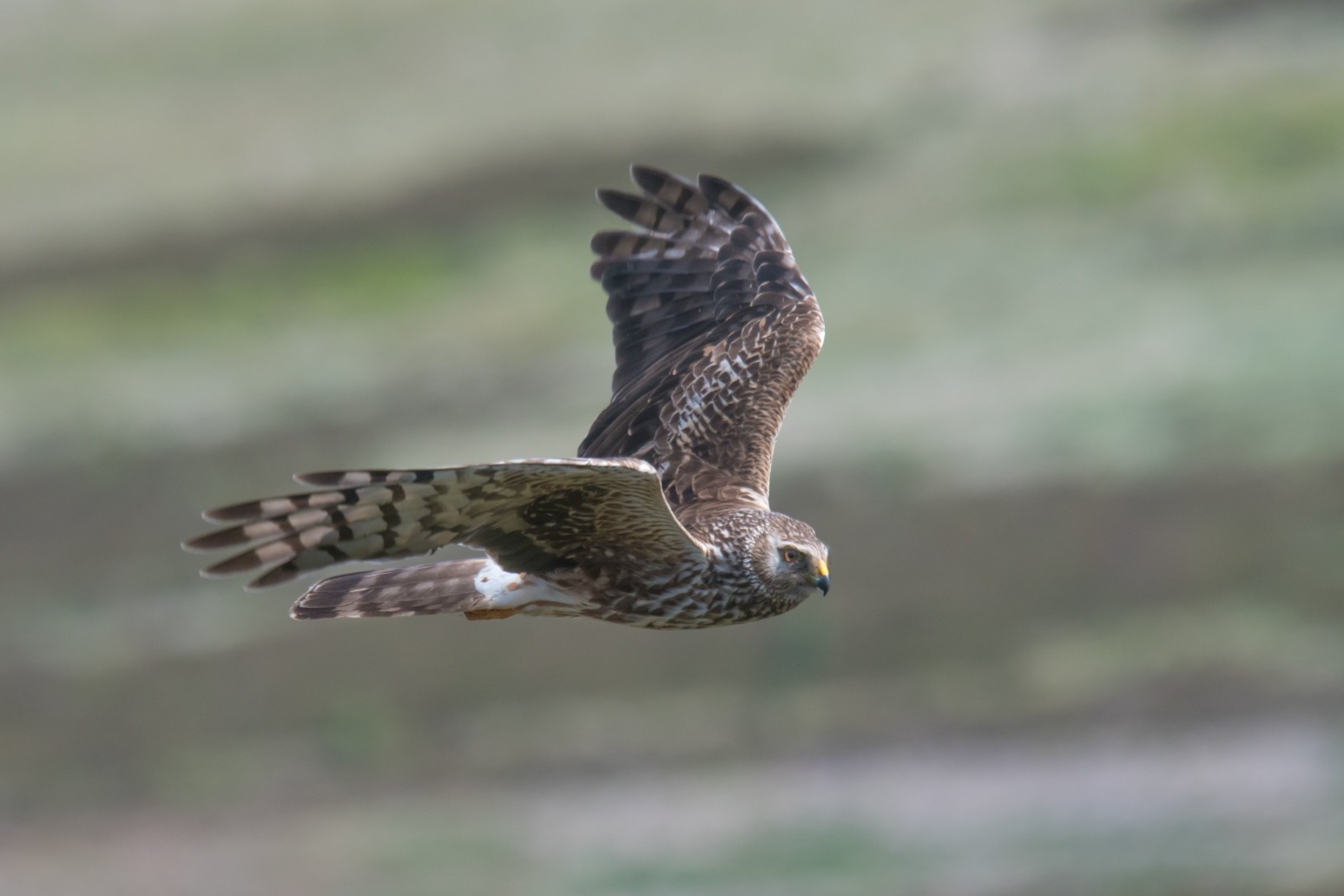
National Trust celebrates good breeding year for hen harriers in Peak District
The National Trust has had its most successful breeding year for rare hen harriers in the Peak District for more than a decade.
The charity said seven youngsters have successfully fledged from multiple nests on National Trust land in the High Peak. This follows work with the RPSB and Peak District Raptor Group to encourage birds of prey to live in the national park.
The trust said it had undertaken work including cutting heather to encourage a more diverse range of moorland plants including sphagnum moss, bilberry and cottongrass, helping support wildlife such as small mammals that the birds rely on for food.
The trust is also working with its tenants to ensure they manage the land to support more birds of prey in the area.
Hen harriers are England’s most threatened bird of prey, due to historic persecution and because they prey on red grouse chicks to feed their young, bringing them into conflict with commercial shooting estates.
They have seen numbers increase from a low in 2013 where no birds successfully fledged from nests in England, leaving the bird on the brink of extinction in the country.
Hen harriers have been helped with various approaches including conservation work, monitoring, and more controversially “brood management” in which chicks are removed from their nest to prevent predation of grouse and released back into the area once they can fend for themselves.
But they still face risks. A study released by government conservation agency Natural England in 2019, analysing satellite tagging data, found that young hen harriers suffer abnormally high death rates, with illegal killing the most likely cause.
Craig Best, general manager of the National Trust in the Peak District, said: “A great deal of work has gone into encouraging more breeding pairs of these majestic birds to the Peak District, so this is brilliant news.
“The presence of the birds indicates a plentiful and healthy food source, which shows the work we have done so far to improve the landscape is starting to provide ideal conditions for different species to thrive.
“However, we want to see more of these important birds of prey in the High Peak, as they play an important role in creating the right ecological balance in the landscape.
“That is why it is crucial that we continue to work together to achieve our aim of growing the population of birds of prey in the area and doing everything we can to prevent persecution.”
This year’s success in the High Peak comes despite the failure of two nests earlier in the season.
To help monitor the young birds’ progress, they have been fitted with tracking tags by the RSPB and Natural England.
Mike Price, from the Peak District Raptor Monitoring Group, said: “A mild winter, good prey availability and the fine weather during the nesting period have no doubt all contributed to what appears to be a successful year for breeding hen harriers both locally and nationally.”
But he warned: “Now the birds have fledged, the birds will face further threats, so we need to continue to work together to remain vigilant and do all we can to protect them.”
Visitors and residents are being encouraged to help with conservation efforts for the birds by staying on footpaths and keeping dogs on leads during the ground nesting season from the beginning of March to the end of July.
Published: by Radio NewsHub